Linguine or Fettuccine: Which Pasta Suits Your Sauce?
Linguine and fettuccine stand among the most beloved pasta varieties worldwide, each bringing unique characteristics to countless dishes.
Italian classics might look similar at first glance, but subtle differences make each perfect for specific recipes.
The flat ribbons of fettuccine provide substantial surface area that handles rich, creamy sauces with remarkable ease.
Meanwhile, linguine's slightly narrower, more elliptical shape pairs wonderfully with lighter seafood preparations and oil-based sauces.
Home cooks find themselves reaching for one or the other depending on what's planned for dinner that evening.
Both types have fascinating historical origins dating back centuries in different Italian regions.
Traditional Italian grandmothers would likely have strong opinions about which pasta should accompany certain regional specialties.
Soon you'll understand exactly when to select each type for your next pasta masterpiece.
Linguine Pasta Overview
Linguine comes from Genoa and Liguria in Italy, making its mark as a beloved pasta variety. Many recipes call for different flours mixed with water, including white alternatives like almond or potato flour, as well as heartier whole-wheat options.
Pasta size and delicacy play key roles in determining which sauce works best with linguine. This pasta shines when coated in grapeseed oil or tomato-based sauces that evenly wrap around each strand.
Most Italian dishes feature linguine alongside fresh pesto or various seafood combinations for authentic flavor.
Fettuccine Pasta
Fettuccine stands out as a beloved pasta choice in both Tuscan and Roman areas. This thick, flat noodle has deep roots in Italian home cooking, where families make it fresh using just eggs and flour.
Many rich sauces pair perfectly with fettuccine because they coat each strand completely - Alfredo and porcini mushroom sauces are classic matches. You can also enjoy fettuccine with hearty beef or chicken ragu dishes.
Traditional Italian ragus differ from simple meat sauces; they develop complex flavors through patient, slow cooking that allows all ingredients to blend together beautifully.
Similarities of Fettuccine and Linguine Pasta
Before digging into their differences, let's see the similarities of linguine and fettuccine pasta.
Linguine vs. Fettuccine: Key Differences
Although linguine and fettuccine might seem similar at first glance, each has unique characteristics and culinary uses that set them apart. Here's a quick guide to help you distinguish between these two popular pasta varieties.
| Feature | Linguine | Fettuccine |
| Serving | Seafood (e.g., mussels), pesto | Bolognese, Alfredo, Porcini |
| Feasibility | Difficult to make at home | Easy to make at home |
| Ingredients | Flour and water | Flour and eggs |
| Surface | Oval cross-section | Flat surface |
| Sauce | Light, thin sauces | Thick, creamy sauces |
| Healthy Factor | Healthier due to lighter sauces | Heavier because of rich sauces |
Serving
Linguine is perfect with seafood dishes, especially mussels, shrimp, or clams, and pairs beautifully with fresh, vibrant sauces like pesto or garlic-infused olive oil. Fettuccine, however, thrives when served with hearty, rich sauces like Alfredo, creamy mushroom (porcini), or savory meat-based Bolognese.
Feasibility
Linguine can be a bit tricky for home cooks because shaping it into thin, oval strands requires precision.
Fettuccine is much simpler and beginner-friendly, as its wider shape is easier to achieve by hand or with basic pasta machines.
Ingredients
Traditionally, linguine is made from just flour and water, creating a lighter pasta, whereas fettuccine incorporates eggs with flour, resulting in a richer, denser texture.
Surface
Linguine has a distinctive oval-shaped cross-section, while fettuccine has a flat, ribbon-like surface, which contributes to its ability to hold thicker sauces.
Sauce
Linguine, being thinner and more delicate, pairs best with light sauces that don’t overpower its texture. It’s commonly served with seafood and light tomato-based or white wine sauces, such as mussels with garlic and white wine.
Fettuccine’s wide, flat shape makes it ideal for thick sauces like Alfredo, Bolognese, and Carbonara. These creamy and rich sauces cling beautifully to the broad noodles, making fettuccine a popular choice for comforting winter dishes.
Its association with heavy sauces has made fettuccine Alfredo a staple in many American restaurants, loved for its indulgent flavor and satisfying texture.
Healthy Factor
Due to its pairing with lighter sauces and lack of eggs, linguine generally makes for a healthier, lighter dish.
Fettuccine dishes often include heavier cream and cheese sauces, making them richer and more calorie-dense.
When To Use Linguine or Use Fettuccine?
Choosing the right pasta depends largely on matching its thickness with the sauce you plan to serve. Thinner, lighter sauces pair best with pasta like linguine, perfect for warm weather meals.
In contrast, thicker, richer sauces go hand-in-hand with heartier pastas like fettuccine, ideal for colder days.
Remember, the pasta’s thickness plays a key role in both flavor and texture, so choosing wisely enhances your dish.
Savory Linguine Recipes
Quick pasta dishes delight the whole family with options for every taste. Each dish flows from pan to plate in minutes rather than hours, making them ideal for those days when cooking feels like too much effort.
Clam Linguine With Coriander and Turmeric
Seafood shines as the star in this dish, with options like shrimps, snails, fresh fish and clams working beautifully alongside your favorite vegetables and fruits. My twist on this recipe pays tribute to the traditional version while adding a special touch of Venetian-inspired spices.
Though different from what you might be used to, this flavorful combination creates a delicious meal that honors its classic roots in a new and exciting way.
Green Vegetarian Linguine
Simple linguine dishes can transform your weeknight dinner routine without extra effort. This recipe serves two people perfectly, combining ease and taste in a low-calorie meal that doesn't sacrifice flavor.
Most ingredients might already be waiting in your pantry, making dinner preparation quick after a long day. Fresh vegetables add color and nutrition, while the subtle seasoning enhances the pasta without overwhelming it.
Linguine With Tuna, Dill, and Lemon
Simple tuna pasta combines fresh linguine with lemony, herb-infused fish for a quick meal. Red onions add a nice kick to the dish while dill brings a pleasant aroma that makes the whole recipe shine.
People who try this easy dinner option often make it part of their regular cooking rotation because it takes so little time. Kids and adults both appreciate how the flavors blend together without being too complicated.
Fettuccine Recipes for Hearty Meals
Pasta lovers rejoice as that dusty fettuccine box finally gets its chance to shine in a mouth-watering meal tonight. From creamy seafood twirls to rich meat sauces clinging to each strand, perfect fettuccine dishes await your personal touch in the kitchen.
Shrimp Broccoli Alfredo
Creamy shrimp Alfredo with broccoli became a family favorite after sampling a similar dish at a local diner. My homemade version captures all the rich flavors but with my own special touch that everyone adores.
Family members now request this pasta regularly, preferring it to the restaurant version they once enjoyed.
Fettuccine Bistro Chicken
These simple dishes transport me to charming Parisian cafés without requiring special ingredients or complicated techniques.
French-inspired flavors make ordinary mornings feel special, turning standard pantry items into something memorable with minimal effort. Nothing beats starting the day with these easy homemade creations that remind me of beautiful French countryside meals.
Vegetable Fettuccine Pad Thai
Zesty Thai spices make this delicious noodle dish a real treat for your taste buds. The combination of crispy tofu, crunchy peanuts and tender fettuccine creates amazing flavor in every bite.
Tofu might be unfamiliar to some people, but it adds perfect protein to this meal without weighing it down.
The aroma alone will have everyone at the table eager to dig in right away.
Got Questions? We’ve Got Solutions
1. When should I use linguine instead of fettuccine?
Linguine works best with light seafood sauces and oil-based preparations, while fettuccine holds up better with creamy, rich sauces like Alfredo.
2. Can I substitute one for the other in recipes?
Yes, you can swap them, but remember that fettuccine is wider and thicker, so it may need slightly longer cooking time and will provide a heartier bite.
3. Which pasta shape originated first?
Fettuccine has deeper roots in Roman cuisine, while linguine originated in the Liguria region of Italy, particularly in Genoa.
4. Are there nutritional differences between the two?
Not significantly - both are made from the same ingredients (flour and eggs or water). The main difference is portion size; fettuccine is slightly heavier per serving due to its wider shape.

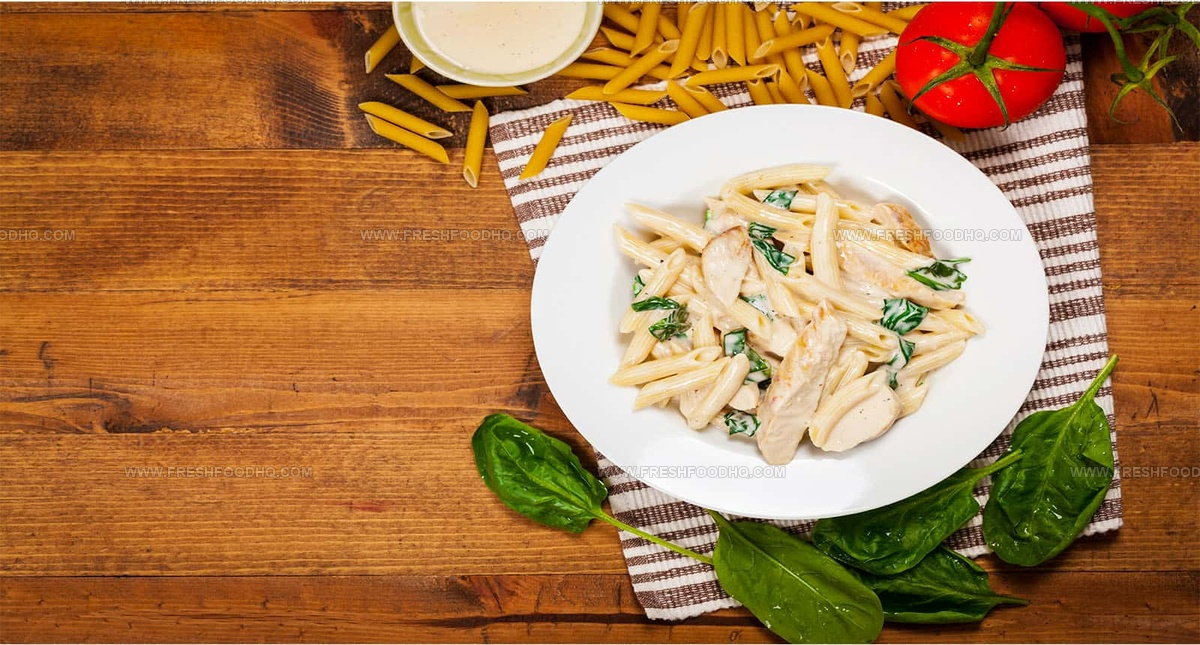
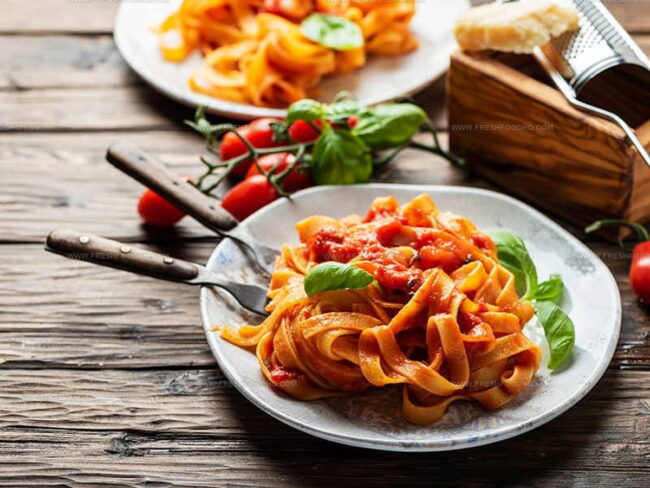
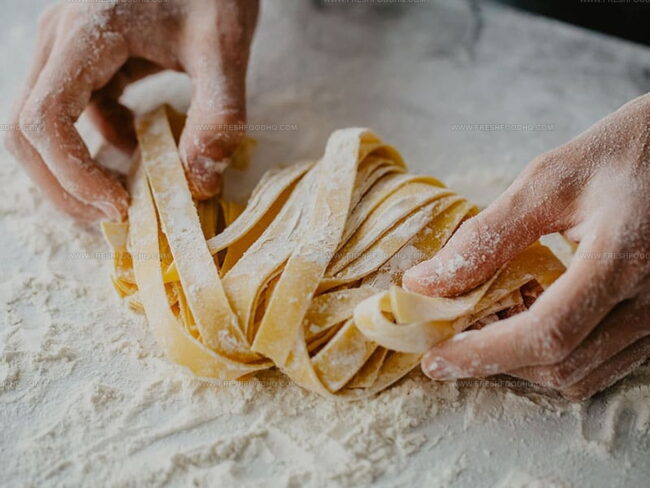
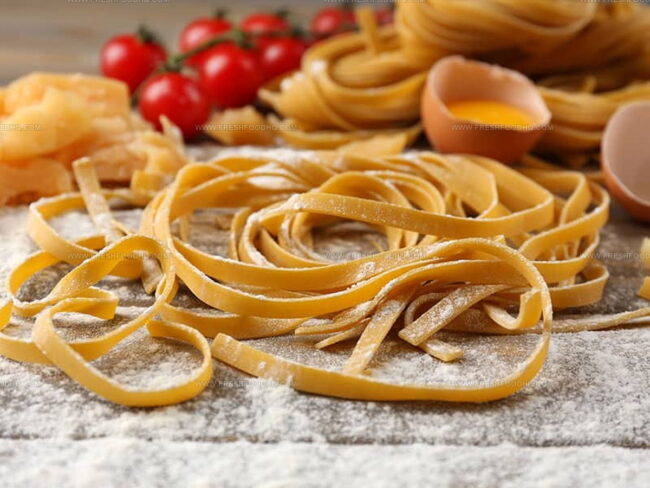
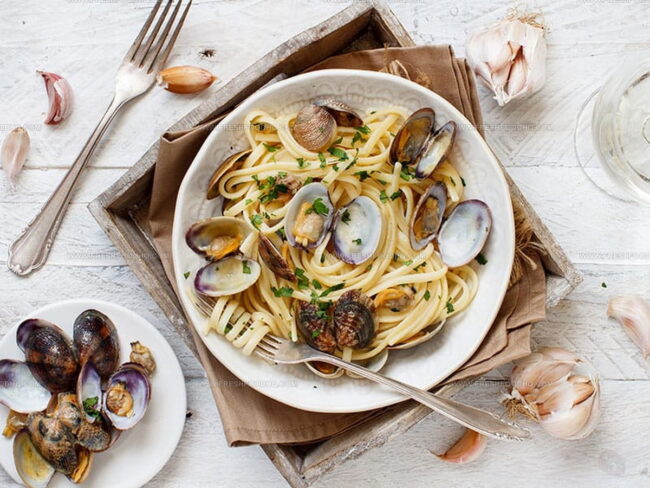
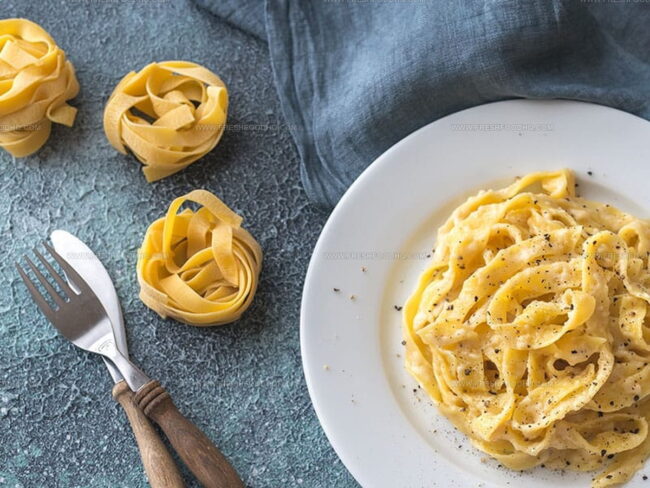
Samantha Lee
Recipe Developer & Content Creator
Expertise
Plant-based and vegetarian recipes, Recipe testing and development, Food blogging and digital content creation, Culinary education and workshops
Education
Oregon Culinary Institute (Portland, OR)
Samantha sees cooking like painting, every fresh herb, every juicy tomato, a new splash of color on a canvas.
After graduating from Oregon Culinary Institute, she blended her love of global cuisines and plant-based cooking into recipes that feel fresh, fearless, and full of heart.
Samantha’s kitchen is a place where comfort food gets a modern remix and every meal feels like a little adventure. When she’s not cooking, she’s out exploring farmers’ markets, sketching new recipe ideas, or getting her hands dirty in a community garden.